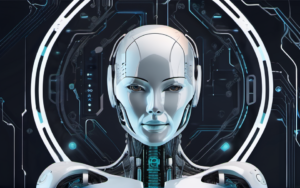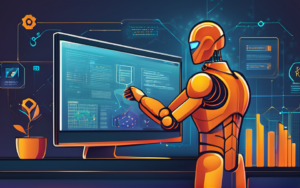Ever wondered how the world keeps your data safe while you sip your coffee and scroll through your favorite social media? Let’s dive into the fascinating story of how cybersecurity is constantly evolving to keep those pesky digital thieves away!
The Rise of Cyber Threats
In the early days, cyber threats were simpler. Most hackers were pranksters, dabbling in mischief more for the thrill than for profit. Remember those pop-up ads and funny messages on your computer screen? Times were much different. But, as we moved more of our lives online, cyber threats became sophisticated and dangerous. Today, cybercrime is a lucrative business.
Imagine your computer brimming with sensitive information, from personal photos to banking details. Hackers know this and have sharpened their tools to steal your data. These cyber-villains are no longer hobbyists but professional criminals. Their weapons? Viruses, ransomware, phishing attacks, and much more. They are constantly on the lookout for gaps in security systems, pouncing on any weaknesses to exploit.
What’s worse? Cyber threats are no longer confined to individual targets. Entire organizations, from small businesses to giant corporations and even governments, are under attack. When a big company gets hacked, it’s not just a financial hit but also a severe blow to reputation and trust. The stakes are higher than ever, and the battlefield has expanded. What does that mean for us? It signals a dire need for better, more advanced cybersecurity measures.
Advanced Defensive Tactics
As cyber threats have evolved, so have the strategies to combat them. Welcome to the age of advanced defensive tactics! Gone are the days when a simple antivirus could shield you from the most menacing forces online. Today, cybersecurity involves a multi-layered approach encompassing firewalls, intrusion detection systems, and encryption protocols.
Consider firewalls as the guards at a castle gate. They monitor incoming and outgoing traffic, ensuring only legitimate data passes through. On the other hand, intrusion detection systems (IDS) work like surveillance cameras. They continuously look for suspicious activities, raising an alarm at the slightest hint of trouble. Encryption acts as a lockbox for your data, ensuring that even if cyber thieves get their hands on it, they can’t make sense of what’s inside without the key.
There’s also the human element. Organizations are investing in cybersecurity training for their employees. After all, even the strongest digital walls can crumble if someone holds open the door for a cybercriminal. By educating staff about phishing scams, password management, and safe online practices, companies are fortifying their first line of defense—their people.
The Role of Artificial Intelligence
As human efforts alone couldn’t keep pace with the rising tide of cyber threats, a new ally emerged on the scene—Artificial Intelligence (AI). Think of AI as a highly intelligent, tireless sentinel that never sleeps. Its machine-learning capabilities enable it to identify patterns and predict threats much faster than any human could.
Remember those movies where secret agents use high-tech gadgets to catch criminals? AI in cybersecurity is just like that. It continuously learns from data, becoming smarter and more adept at detecting anomalies. For instance, if a cyber attacker tries something new, AI systems can quickly recognize the unusual behavior and act swiftly to neutralize the threat. This real-time response capability is crucial in preventing breaches before they cause significant damage.
AI is also employed in automation. Mundane tasks like system updates and security scans can be tirelessly handled by AI, freeing up human experts to tackle more complex issues. By analyzing vast amounts of data, AI pinpoints vulnerabilities that might be overlooked. It’s like having a seasoned detective who never misses a clue, tirelessly working to keep you safe.
The Future of Cybersecurity
Peering into the future, cybersecurity will only grow more advanced and integral to our digital lives. The development of quantum computing, blockchain technology, and zero-trust security models promise even stronger defenses. Imagine a world where hackers are continually outsmarted by futuristic technology, and your data remains secure no matter what.
Quantum computing will revolutionize encryption methods. Think of it as upgrading from a simple lock to an impenetrable vault. Blockchain technology, famous for its use in cryptocurrencies, will find more applications in ensuring data integrity and preventing tampering. Meanwhile, the zero-trust model adopts a mindset of “never trust, always verify,” scrutinizing every access request as though it’s from an untrusted source. It’s like having a hyper-vigilant guardian who questions and verifies every individual entering your digital sanctuary.
With cyber threats continually evolving, the emphasis on innovation and proactive defenses will be more crucial than ever. While the battlefield is constantly changing, the relentless drive for security will always aim to stay one step ahead of the adversaries. So, the next time you log in or make an online transaction, take a moment to appreciate the fascinating world of cybersecurity, always working hard to keep you safe in this digital age.




